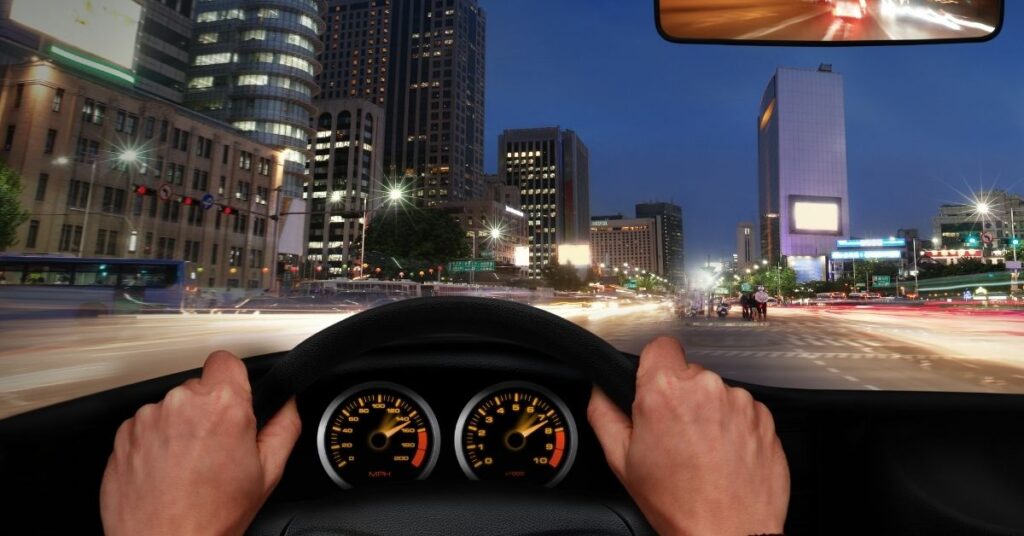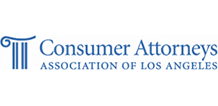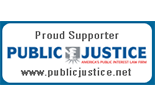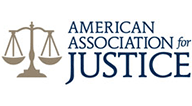Walking after dark should not be a life-threatening activity, yet nighttime pedestrian accidents remain one of California’s most serious traffic dangers. Reduced visibility, distracted driving, and poorly maintained infrastructure combine to put pedestrians at greater risk after sunset. When an accident occurs, California law places a higher duty of care on drivers, recognizing that darkness demands greater caution. Below, we explain why these crashes are so common, how liability works, and what evidence is critical to proving negligence after a pedestrian accident at night.
The Reality of Pedestrian Accidents at Night in California
Statistics from the California Office of Traffic Safety (OTS) reveal that over 75% of fatal pedestrian crashes happen at night even though far fewer people walk after dark.
Key risk factors include:
-
Low Visibility: Headlights create glare, shadows hide pedestrians in crosswalks, and dark clothing can make a person nearly invisible.
-
Driver Fatigue or Impairment: Late-night drivers are more likely to be drowsy or under the influence of alcohol or drugs.
-
Speeding and Light Traffic: Fewer cars on the road tempt some drivers to travel faster, reducing their stopping distance.
The combination of poor lighting and driver behavior means pedestrians often have little chance to avoid an impact in a nighttime pedestrian crash.
California Law Imposes a Heightened Duty on Drivers for Pedestrian Accidents at Night
California Vehicle Code §21950 requires drivers to yield the right of way to pedestrians in marked and unmarked crosswalks and to exercise “all due care” to avoid collisions. Courts have interpreted “all due care” to mean that drivers must take extra precautions at night, when visibility is naturally limited.
Practical examples of this heightened duty include:
-
Reducing Speed when approaching crosswalks or poorly lit intersections.
-
Using High Beams Appropriately to illuminate pedestrians without blinding oncoming traffic.
-
Scanning More Carefully for pedestrians outside marked crosswalks.
Failing to adjust driving behavior for darkness can be powerful evidence of negligence.
When Public Entities May Share Liability for Pedestrian Accidents at Night
While drivers bear primary responsibility, cities and counties also have a duty to maintain reasonably safe streets. Dangerous conditions that may support a claim against a public entity include:
-
Poor Lighting: Burned-out streetlamps or inadequate illumination around crosswalks.
-
Defective Crosswalk Design: Faded markings, confusing signals, or missing pedestrian islands.
-
Obstructed Sight Lines: Overgrown trees or poorly placed signage blocking a driver’s view.
Under California’s Government Claims Act, a victim must file an administrative claim within six months of the accident before suing a public entity. Vititoe Law Group routinely investigates these municipal failures while meeting strict filing deadlines.
Evidence That Strengthens a Nighttime Pedestrian Claim
Because drivers often deny seeing the pedestrian, early evidence collection is critical. Key types of proof include:
-
Scene Photographs and Video showing lighting conditions, streetlamp outages, or malfunctioning signals.
-
Lighting Measurements performed by experts comparing actual illumination to California’s roadway standards.
-
Surveillance or Dashcam Footage capturing driver speed or failure to yield.
-
Witness Statements describing the driver’s behavior, such as texting or failing to slow.
-
Medical Records documenting the timing and severity of injuries.
Vititoe’s team frequently works with accident-reconstruction engineers and lighting experts to demonstrate how a reasonable driver should have seen the pedestrian. If you need help after a severe nighttime pedestrian crash, our team will work with you.
Comparative Negligence Considerations
California follows a pure comparative negligence system (Civil Code §1714). Even if a pedestrian is partially at fault—for example, crossing outside a marked crosswalk or wearing dark clothing—they can still recover damages. The court simply reduces the award by the pedestrian’s percentage of fault.
For example, if damages total $500,000 and the pedestrian is found 20% responsible, they can still recover $400,000.
Steps to Take Immediately After a Nighttime Pedestrian Accident
-
Call 911 and Seek Medical Care – Even seemingly minor injuries like concussions or internal bleeding may worsen without treatment.
-
Report the Incident – Obtain a police report and identify the responding officers.
-
Document the Scene – Photograph lighting, signage, and vehicle positions while conditions remain unchanged.
-
Collect Witness Information – Independent accounts can counter a driver’s claim of sudden pedestrian movement.
-
Contact a Personal-Injury Attorney Quickly – An experienced lawyer can send preservation letters to secure surveillance footage before it is erased.
Damages Available to Victims
Victims of nighttime pedestrian accidents may recover compensation for:
-
Medical Expenses (emergency care, surgeries, rehabilitation, future treatment)
-
Lost Wages and Reduced Earning Capacity
-
Pain and Suffering including physical pain and emotional distress
-
Permanent Disability or Disfigurement
-
Punitive Damages in cases of extreme recklessness, such as drunk driving
An attorney will work with medical and economic experts to calculate both current and future costs.
Frequently Asked Questions about Pedestrian Accidents at Night
Do pedestrians always have the right of way in California?
Drivers must yield in marked crosswalks and at intersections, but pedestrians must also use reasonable care. Crossing mid-block or against a signal can reduce—but not necessarily eliminate—recovery under comparative negligence.
What if I was outside a crosswalk?
You may still recover damages if the driver was speeding, impaired, or failed to exercise due care. The amount may be reduced according to your share of fault.
Can I sue the city for poor lighting?
Yes, if inadequate street lighting or faulty signals contributed to the crash. A government claim must be filed within six months of the accident.
What if the driver fled the scene?
Uninsured/underinsured motorist (UM/UIM) coverage under your own auto policy may apply, even if you were a pedestrian. An attorney can help make a UM/UIM claim and work with law enforcement to locate the driver.
How long do I have to file a lawsuit?
Most personal-injury claims must be filed within two years of the accident. Claims against government entities require an administrative claim within six months.
Why Legal Representation Matters
Insurance companies often dispute nighttime pedestrian claims, arguing that the driver “couldn’t see” the victim or that the pedestrian acted recklessly. Vititoe Law Group:
-
Investigates lighting conditions and crosswalk design.
-
Works with reconstruction and human-factors experts to prove visibility issues in a nighttime pedestrian crash.
-
Negotiates aggressively with insurers and government agencies.
-
Prepares every case for trial to secure the compensation clients deserve.
What to Do If You’ve Been Hurt
Nighttime pedestrian accidents are rarely “unavoidable.” California law recognizes that darkness requires drivers to exercise heightened caution.
If you or a loved one has been injured after dark, contact Vititoe Law Group for a free consultation. We will investigate every factor—driver behavior, roadway design, and municipal maintenance—to hold all responsible parties accountable and fight for the full recovery you deserve.








